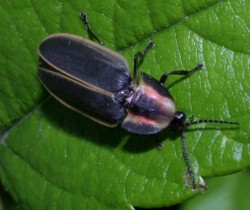By Lisa Gardiner, Aug 07, 2011
It seems strange to mark the location of a fish, doesn’t it? They can swim and move away from the marker, right? I wonder while standing on a dock waiting for the boat that will take about ten of us out to a reef. There, we will scuba dive for fun and also mark the locations of lionfish, an invasive species in the Caribbean.
Volunteer divers on the Dutch island of Bonaire are helping Bonaire National Marine Park eliminate invasive lionfish from its coral reefs by marking the locations where the fish are found. A diver who spots a lionfish is instructed to attach a small flag, provided by the park, to a rock near the fish.
The answers to my questions about marking fish locations become clear once I splash into the water and see the fish and flag markers for myself. Swimming along sections of reef, I saw dozens of flags that had been placed there by divers and each had one or more lionfish hovering nearby. It turns out that lionfish don’t stray far from their particular nook of reef. They stay near the markers.
It’s illegal to hunt or in any way harm marine life in the waters surrounding Bonaire. Except, that is, for lionfish.
They are beautiful fish, placidly fluttering their glitzy ruffle of fins, and hovering next to their flags. Yet, a voracious appetite for reef fish combined with a high rate of reproduction and no known predators in the Caribbean make lionfish a threat to biodiversity. Native to the Pacific, the lionfish is an invasive species in the Caribbean. … Read more
Categories: Animals, Biology, Citizen Science, Ecology & Environment, Ocean & Water







